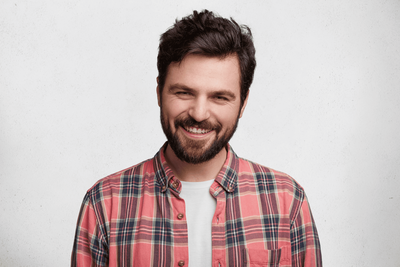To put it simply, BOWWE Dictionaries are a multi-purpose tool for creating multi-language websites. With different options at your disposal you can have:
- automated language translation,
- manual supervision & proofreading,
- or entirely separate pages for every language
It’s a very powerful feature, available only for the paid version of BOWWE. We’re gonna explain in detail what each dictionary option means and what it is used for.
Upgrade your project
⚡ Disclaimer:
This tutorial shows examples of Website type project, but it applies to all BOWWE products (Blog Articles however use only Translation Based on Existing Page).
In order to translate your website first you need to add a secondary language for your page to use.
Before creating a new language version of your page you need to evaluate which option of page translation is best suited for your project. Each option will be explained later in the tutorial but let’s summarize them for now:
- Example: Imagine you have a website in English, and you want to create a French version. You don’t want to make any major changes to the design or structure- just translate the content.
- Solution: In this case, you should create an Independent site. This will make an exact copy of your original page, and you can then just update the text to match the new language or automatically translate upon copying the subpage.
Learn How
OR
- Example: You have a website with the same product descriptions in 5 different languages (English, Spanish, German, etc.), but you don’t want to re-build the entire page each time.
- Solution: Use Auto Translation. This lets you store all the text (like product names and descriptions) in one place. When you add a new language, the text can automatically translate into that language, and you only need to edit the words, not the layout or images.
Learn How
The SEO content can be edited for each language independently, or automatically all at once. Go to Pages menu in the main language and open page settings. In the Social media and Rocket SEO portion of those settings you can find a translation icon. It’s available for independent input windows or at the top-right corner for all content. Clicking on it will ask you to select any or all available languages for our AI to translate and with a single click it will automatically update your SEO descriptions on selected languages. We advice to start translating after all languages you need have been added to get this done in one go. No need to edit each language independently.
The first method of translating your website is to make an Independent site based on the already existing page. This will create an exact copy of the same page that will be accessible as a new entity in a different language.
⚡ Expert Tip:
Be sure to add a language version of an already finished page, since the copy is made once and any changes on the main page won’t go over to the language version afterwards.
Upon selecting this method three more options will be presented to you: Auto translate entire site, Translate in steps and Empty page. Which option is best suited for you depends entirely on what you need. We'll discuss the differences between them below.
This option will use our BOWWE AI Language tool and simply translate all text elements of the selected page into the language created at the begining of this process. With just a single click your page will be translated and you will be transported to it in a few moments after.
To acces the different language page remotely click on the pencil icon and Go to subpage in selected language.
Note:
Automatic translation requires higher project plan and AI credits to use.
Essentially you have two independent pages with freedom to change anything on each one of them without influencing the other. This creates a situation, where if you’ll need to change content on both pages, you’ll need to do this on each one of them individually. It's a great solution for strong localization options, since you can focus on creating different campaigns for different markets (i.e. new images, additional sections, etc). In projects with a small number of language versions this method is fast and very easy to manage, but when the number of languages increases (4 or more), or if you know your page will be consistently updated, this method might be more troublesome. For that, we recommend the next solution.
This option doesn't translate the page right away. It creates a copy of your page and lets you translate chosen parts of your page. This option gives you more control over the translation of your page. Great for projects where not all texts are for translation and for people wanting to create specific keywords.
The last method is for creating an empty page from translations. Instead of a copy, it will create a blank page with the same name in the different language. This will enable you to have completely different content for your users speaking in specific language for even stronger website localization although this method might be used in the case where remaking a copied version of main page might take more time than making a new version from scratch, however we do recommend using previous methods for translating your website.
BOWWE Dictionary is designed to manage a greater number of languages with operation on only one page template. Unlike with the creation based on the existing page, dictionaries don’t create a copy of the page. The texts from the page are stored inside the dictionary library giving you the access to each paragraph with the ability to edit them at any time. Those texts are then translated to all chosen languages without you having to open each language version. The content of the page is unchanged - every color or picture placement will stay exactly the same, with the only difference being the text translation.
This method gives you two more options: Auto translate entire site and Translate in steps. They behave similarly to Independent counterparts with one, notible distinction in the form of dictionaries.
This option will create keys with values changing depending on the selected language. This makes stylistic changes made on the page to carry through every language version with only the texts and selected contents to be switched at will. You can change the content of the key by accessing specialized menu in each widget, or by accessing the dictionary library. This method is perfect for multi-language projects that need to be updated over time, for it will save your time and resources, by having update only one page once and not needing to repeate the proces on its other variants.
Note:
Automatic translation requires higher project plan and AI credits to use.
Like it's counterpart, this option also doesn't translate entire page but it allows you to create keys for selected widgets. You will still have one page with different language variations and only the widgets with set up keys will be translated, leaving the rest of content unchanged between languages.
In order to set up dictionaries, you need to switch your subpage to the dictionary version and create translation keys. To do this, simply:
Note:
If this option is greyed out, it means that this subpage already has other translations created.
To open the library with all page translations:
- Notify changes - highlight text that have been changed and requires verification, very useful for proofreading
- Automatic translation - setting this on main language will automatically translate selected phrase on every other language
- Overwrite manual translation - manual translation normally doesn’t change when main language gets updated, but with this option enabled manual changes will be cast aside and replaced with current main version
This method is extremely useful when the main focus is to have multiple languages and one, consistent design. It might be more time-consuming when creating in the first place, but if you’re planning to consistently update your page, changing only one instead of, for example, 8 will save you much more time in the long run.
Dictionaries are working only within the subpage they were created. If you had a key named on, for example, Main Page and About Us Page, then those would be two separate keys that don’t influence each other. The NAVBAR and the FOOTER keys are stored in the designated libraries and are not considered as part of any specific subpage but as their own entities.
In case you need to add new content to the main language page you can still add it to the dictionary library. Select the text widget you wish to translate and click the BOWWE Dictionary button (available only if the page has been converted to dictionaries).
This will open the translation menu for the selected widget for every available language. Here you can:
- edit both original text and the translation for each language,
- enable automatic translation which will translate the text on all languages,
- and overwrite manual translation which normally doesn’t change when main language gets updated, but with this option enabled manual changes will be cast aside and replaced with current main version
Let’s say that your subpage is using an image with english slogans and you made a translation to French, but the image still has english text. There is a solution to this problem in the form of image localization. You can change the displayed image in the French version while the English version still retains the original image.
Note:
You might need to change the image in your main language. This will activate a prompt asking you if you want to replace this image on all language versions or just in the language you currently are. You can always come back and adjust other languages.
Similarly to localizing images, localizing button links allows you to customize redirections on your page to different language pages depending on the current translation of your website. This will allow you to tailor your website towards your multilanguage audience. You can use this to redirect your users to dedicated blog articles or websites.
Congratulations!
Now you know how to create a multilanguage website.


























